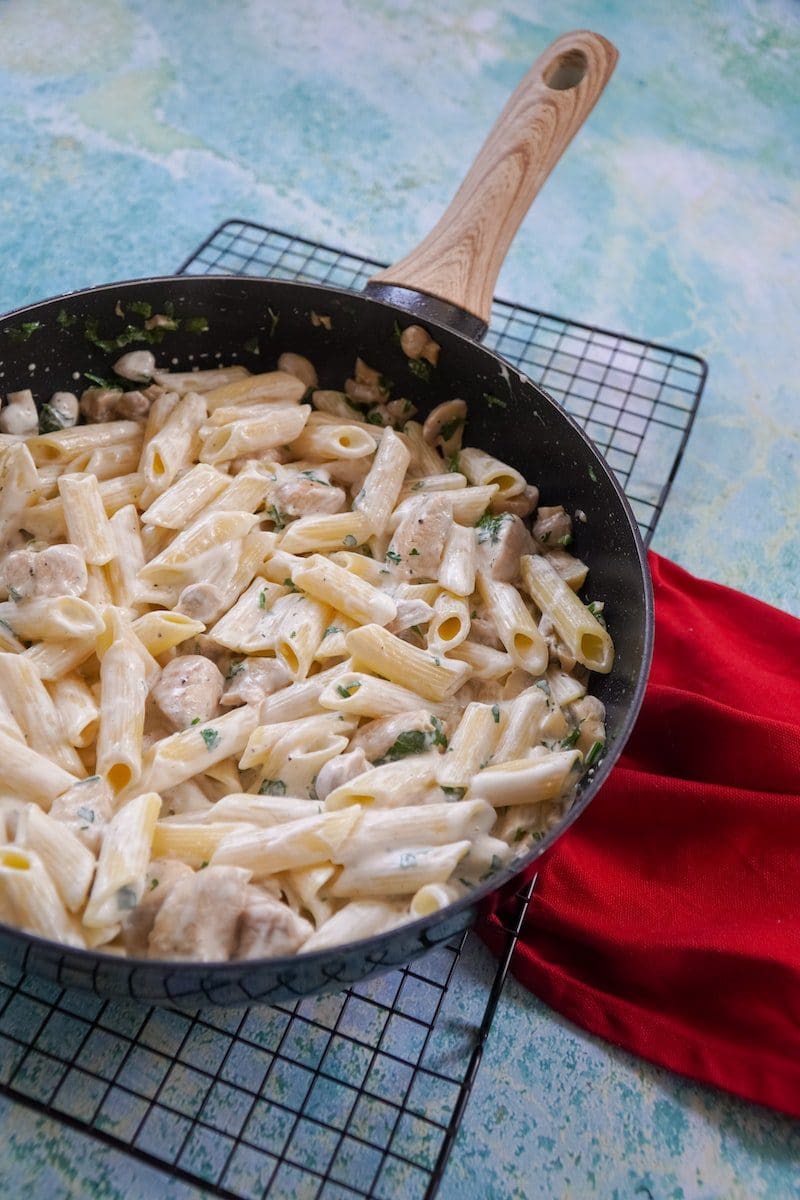Food is a necessity, but it has become a luxury too. The taste buds demand variety more than regular food, there are different cuisines around the world, and every cuisine, every food item has its peculiar taste and texture.
One of the most admired food items is pasta. Pasta is the legacy of Italy; it is believed that Marco Polo introduced pasta to Italy.
Although, there are some controversies about which pasta originally belonged to China and was later introduced to Italy.
The pasta recipe propagated to different countries and regions, and it got the love of taste buds of people worldwide.
There are a variety of shapes in pasta. The difference they create is the recipe for it. Different pasta shapes include penne, ziti, rigatoni, spaghetti, etc.
Key Takeaways
- Ziti is a type of pasta characterized by its long, tube-like shape with straight-cut ends, used in baked pasta dishes like ziti al forno or in pasta salads.
- Penne is another tube-shaped pasta variety with a smaller size, diagonal-cut ends, and ridges along its surface, making it suitable for various sauces and pasta dishes.
- The key difference between ziti and penne is their size, shape, and typical culinary applications, with ziti having longer, straight-cut tubes and penne featuring smaller, diagonally-cut tubes with ridges.
Ziti vs. Penne
The difference between ziti and penne is the shape and texture. Both are pasta types, but there are differences between them.

Comparison Table
| Parameter of Comparison | Ziti | Penne |
|---|---|---|
| Size | 2 inches long | 2.12 inches long |
| Texture | Smooth surface | Lengthwise ridges on the surface |
| Texture when cooked | Fragile | Firm |
| Types of sauces | Thin sauces | Thick sauces |
| Versatility | Less versatile | More versatile |
What is Ziti?
Ziti is a type of pasta that has a tube shape. The origin of ziti can be traced to Naples; the word ziti comes from Zita, which means bride.
It is a custom to serve the classic ziti pasta as the first course of the meal at a wedding as the bride’s pasta.
The distinction of ziti first lies in shape; ziti is in a tube shape and is cut at square angles. Ziti might resemble penne, but it is slightly shorter, approximately 2 inches long, and 0.4 inches thick.
Ziti has a smooth exterior texture, turning soft and buttery when cooked.
The pasta dough is a regular dough, although there are some variations; otherwise, the classic recipe has basic ingredients like flour, water, salt, etc.
The flavor of pasta lies in the sauce it is cooked in; like ziti, a thin pasta is expected to be served in thin sauces, which means sauce that has a watery consistency. For example, marinara sauce.
Another recipe that goes well with ziti is baked ziti, the most loved form of ziti, wherein the ziti pasta is baked with layers of cheese and a variety of vegetables and meat.
The tenderness of ziti compliments the smoothness of cheese; thus, it is the most loved recipe.
Ziti is limited to some recipes, which makes its substitute penne a more admirable choice. However, those limited ziti recipes are more admirable, like the irresistible baked ziti pasta.

What is Penne?
Penne pasta is a type of pasta that comes from the Italian word ‘quill.’ It is in a cylinder shape and is cut at a sharp angle. One of the distinctive features of penne pasta is that it has ridges on it.
Penne pasta is approximately 2.12 inches long, 0.4 inches wide, and has 1 mm thick walls. It has lengthwise ridges on the surface, although varieties of penne are available without ridges. When cooked, penne retains its rigidity.
Unlike ziti, penne has a different texture; penne is thick and rigid. The dough of penne pasta is a regular dough, with regular ingredients like flour, water, salt, etc.,
Pasta is made with pasta machines, which is how perfect ridges are attained. Ridges on pasta enable it to soak more of the sauce and moisture.
Penne pasta is cooked in a variety of sauces; its versatility makes it more admirable than other types of pasta.
As there is a large variety of sauces that compliments different types of pasta and among all types of pasta, penne is one of the most versatile pasta.
Penne pasta has ridges. Thus, it goes well with cheese; the ridges stick cheese in them, and unlike ziti, penne is not fragile and thus a better option over baked ziti.
Penne is more flexible than Ziti. The rigidness and flexibility of penne help in coating the heartier sauces like pesto, carbonara, ragu, etc.
Penne is served ‘al dente,’ which means penne is cooked firm to bite; its tubular form allows the sauce to fill inside the pasta, and the angular ends hold the sauce.
Besides sauces, penne pasta is tossed with vegetables and some shredded cheese.
Penne is chosen over Ziti due to its firm nature and the adaptability of sauces. Penne proves to be an excellent choice when it comes to serving a meal of complex flavors and textures.

Main Differences Between Ziti and Penne
- Ziti is 2 inches long and 0.4 inches wide. On the other hand, penne is 0.12 inches long and 0.4 inches wide.
- Ziti has a smooth surface, whereas penne has lengthwise ridges over it.
- Ziti is fragile when cooked. On the contrary, penne is relatively rigid when cooked.
- Ziti is less versatile in cooking; on the other hand, penne is more versatile due to its structure.
- Ziti goes well with thin sauces like marinara, but penne goes well with heavier sauces like pesto, carbonara, etc.


The comparisons made between the two pasta types were very thorough. It was interesting to see the differences laid out so clearly.
Yes, the detailed breakdown was very helpful. It’s always good to have a clear understanding of what sets different pastas apart.
Was expecting more scientific, nutritional information. Disappointed by the lack of that aspect in this article.
I’m sorry, but this article is just regurgitating well-known facts. There’s nothing new or insightful here. Seems like a waste of time.
Disagree, the detailed comparison between Ziti and Penne was very enlightening to me. I think there was new information to learn from this post.
The article’s descriptions of the taste, texture, and culinary uses of ziti and penne were very vivid and engaging. It made me hungry just reading it!
I agree, the article really brought those pasta varieties to life. A testament to the power of good food writing.
Great article! Very informative and well-explained. As an avid cook, I love learning about the history and distinctions between various types of pasta. Keep up the good work!
I couldn’t agree more. Very well-written and a lot of interesting facts that I didn’t know. Good job!
I found the details about the origins of Ziti to be quite fascinating. It’s impressive how much history and tradition is associated with pasta.
Agreed. It’s always interesting to learn about the cultural and historical significance of different food items. Shows the rich tapestry of human culinary traditions.
I never knew about the tradition of serving ziti as the first course of a wedding meal. That’s a wonderful nugget of information from this article.
It’s these unique cultural details that make food so much more than just sustenance. I found it quite delightful to learn about as well.
I’m not sure I’ll ever look at ziti and penne the same way again. This article was a real eye-opener about the differences between them and the history of these dishes.
I agree, it’s like a whole new world has opened up just from knowing these details about ziti and penne.
Quite the tantalizing read, I’d say. The food enthusiast in me is now yearning to try all the different applications of ziti and penne!
Sorry to say, but this seemed a bit like a pasta enthusiast’s fanfiction more than a factual article to me.
Interesting. I found the tone informative and the details seemed accurate. Perhaps it’s just a matter of perspective.
I appreciate how the article delves into the history and cultural significance of Ziti and Penne. It’s always good to know the stories behind the food we eat.
Absolutely. Understanding the context of a dish can really enhance the dining experience. This article did a great job of providing that context.